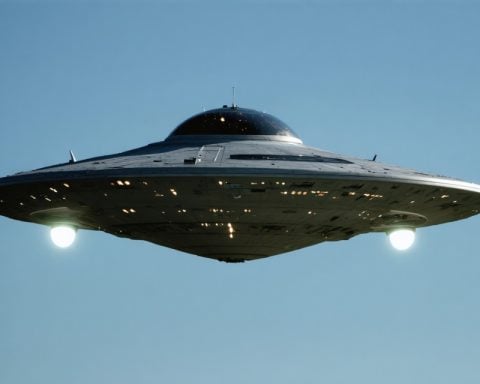Japan’s Technological Leap in Satellite Systems
In a significant advancement for satellite technology, Mitsubishi Electric has introduced the sixth satellite in Japan’s Quasi-Zenith Satellite System (QZSS) at its state-of-the-art Kamakura Works facility. This satellite is scheduled to be launched aboard the H3 rocket by the end of March 2025, marking a pivotal moment in enhancing Japan’s navigation accuracy.
The new satellite is equipped with innovative high-precision capabilities, designed to improve positioning services and global navigation satellite systems. This move aims to provide better accuracy and reliability, especially in urban environments where traditional signals may falter. By incorporating advanced technologies, Mitsubishi Electric seeks to bolster Japan’s satellite infrastructure and support various critical applications, including disaster response and transportation systems.
As digital navigation demands grow, the QZSS program stands out as an essential component in Japan’s efforts to elevate its geospatial capabilities. With this upcoming satellite, the country is poised to take a leading role in the global satellite communications landscape.
In summary, Mitsubishi Electric’s development of QZSS-6 represents a leap forward in the pursuit of more precise and reliable navigation, promising to enhance the daily lives of individuals and businesses across Japan and beyond. Keep an eye on the launch date, as this technology could change the way we navigate our world!
Japan’s Next-Gen Satellite System Set to Transform Navigation and Geospatial Technology
Introduction to Japan’s Quasi-Zenith Satellite System (QZSS)
Japan is making significant strides in satellite technology with the development of the Quasi-Zenith Satellite System (QZSS), a crucial player in enhancing navigation accuracy across the country. With the upcoming launch of the sixth satellite, QZSS-6, by Mitsubishi Electric, Japan is set to enter a new era of geospatial technology, catering to the growing demands for more reliable and precise positioning services.
Features of the QZSS-6 Satellite
The QZSS-6 satellite is endowed with cutting-edge technologies aimed at significantly improving positioning accuracy. Here are some notable features:
– High-Precision GNSS Capabilities: The satellite is equipped with advanced GNSS technology, focusing on providing enhanced accuracy, especially in urban canyons where signal interference can affect traditional GPS systems.
– Enhanced Urban Navigation: By improving signal reliability, QZSS-6 is expected to aid smart city applications, autonomous vehicles, and precision agriculture, among other sectors.
– Disaster Response Optimization: This satellite can improve Japan’s preparedness for natural disasters by facilitating better navigation for emergency services.
How QZSS Stands Out in Global Navigation
The QZSS program differentiates itself by offering unique services that very few satellite systems globally provide, including:
– Accuracy in High-Density Areas: QZSS enhances navigation performance in areas where satellite signals can be obstructed, making it vital for metropolitan areas.
– Complementary System to GPS: QZSS is designed to complement the Global Positioning System (GPS) as well as other regional satellite navigation systems, providing redundancy and increased reliability.
Pricing and Launch Insights
The QZSS-6 satellite is scheduled for launch aboard the H3 rocket by the end of March 2025. While specific pricing details regarding the full implementation and operational costs of the QZSS are not publicly disclosed, investments in satellite infrastructure typically run into billions of yen, reflecting Japan’s commitment to advancing its technological capabilities.
Limitations and Challenges
Despite the promising features and advancements, there are limitations:
– Dependence on Ground Infrastructure: The effectiveness of the QZSS system relies on robust ground support and infrastructure to utilize the data collected from satellites efficiently.
– Technical Challenges in Launch: Any delays or technical challenges during the launch process could affect the timeline for introducing these advanced capabilities to end-users.
Future Predictions and Trends
Looking ahead, the QZSS-6 launch is expected to pave the way for significant innovations in both commercial and public sector applications. As navigation technology continues to evolve, we anticipate:
– Increased Adoption of Autonomous Technologies: The enhanced precision offered by QZSS could lead to a surge in the adoption of autonomous vehicles and drones, heavily relying on accurate GNSS data.
– Advancements in Smart City Solutions: We can foresee more integrated smart city services utilizing QZSS data to improve urban living conditions, transportation, and logistics.
Conclusion
In summary, Mitsubishi Electric’s introduction of the QZSS-6 satellite is a landmark development for Japan’s satellite navigation landscape. This upcoming satellite represents a crucial enhancement in geospatial technology, promising reliable navigation services that will impact various domains, from day-to-day commuting to disaster management. As Japan prepares to launch QZSS-6, the global navigation satellite systems landscape is set to experience transformative changes that promise profound benefits for society.
For more information on Japan’s satellite advancements, you can visit Mitsubishi Electric.



















